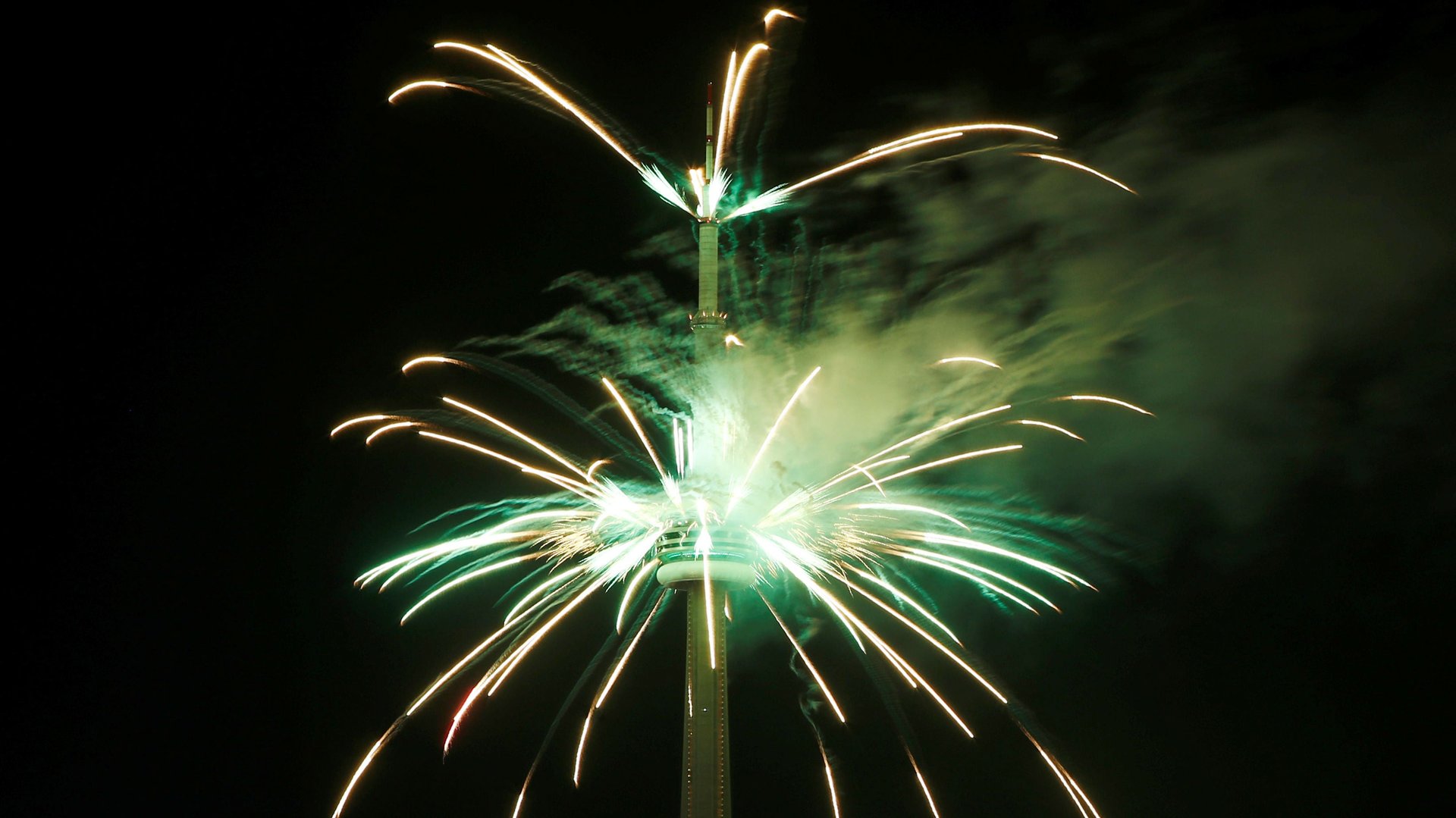Step back and behold the explosive chemistry that gives fireworks their color
Whether you’ve been celebrating in Canada (Canada Day, July 1), the US (Independence Day, July 4), France (Bastille Day, July 14), or anywhere else in the world, you can surely appreciate the fact that fireworks are a display of chemistry at its finest.


Whether you’ve been celebrating in Canada (Canada Day, July 1), the US (Independence Day, July 4), France (Bastille Day, July 14), or anywhere else in the world, you can surely appreciate the fact that fireworks are a display of chemistry at its finest.
Generally, fireworks have two main components: pea-sized salt pellets for the colorful explosions, and black powder to shoot those pellets into the sky. These are encased in a cardboard shell with a fuse in the middle.
The black powder is the more abundant of the two materials that make up the firework, filling up a pocket at the bottom, as well as a pocket in the middle of the package, that will shoot out the colorful metal. The original formula created by the Chinese in the 7th century actually used honey as a fuel source (discovered purely by luck) along with sulphur and potassium nitrate, to drive the explosion upwards, according to Andy Brunning, a chemistry teacher based in Cambridge, UK. These days, pyrotechnicians fill modern fireworks with charcoal instead of the original sweet ingredient.
Varying the amount of black powder in each of these sections can alter how far your explosion shoots into the sky, how far it explodes outwards, as well as how hot the pellets get.
The pellets that generate color are tiny balls of chemical salt. These salts are different metal and nonmetal compounds bonded together by a superstrong hold between the positively-charged metal and the negatively-charged nonmetal components.
The nonmetals are usually chemicals like nitrogen or chlorine with oxygen attached to them, and can work as another source of oxygen for the burning explosion, or can enhance its color.
The metal is responsible for each of these colors. “Different chemical elements heated to a high temperature get rid of this energy by producing very specific wavelengths of light,” John Conkling, a retired chemist formerly at Washington College in Maryland, explains for the American Chemical Society:
The metals used in these salt pellets are made up of atoms with electrons floating around them. Usually, these electrons hang out as close as they can to the nucleus. But when you add energy to these atoms, as you do when you heat up powder, these electrons become “excited” and get pushed farther and farther away. The amount of heat energy needed to push these electrons away varies for each metal. Electrons don’t like being far away from the nucleus, so they bounce back down as soon as they can. When they do, they release the same amount of energy applied to them, but in the form of a unique wavelength of light instead, as Scientific American explains.
Some metals can generate multiple colors, depending on how hot they get. We see these different light wavelengths as different colors.
Here’s the full list of colors you can make from metals or metal oxides, courtesy of Brunning:
The fireworks that light up the night are usually elaborate combinations of metals and black powders. Pyrotechnicians have even begun to play around with making quiet fireworks (paywall), so that children, dogs, or anyone else spooked by sudden loud bangs can enjoy the visual displays.
Next time you celebrate with fireworks, you can give a nod of thanks to the chemistry at work—just please be careful while you’re at it.